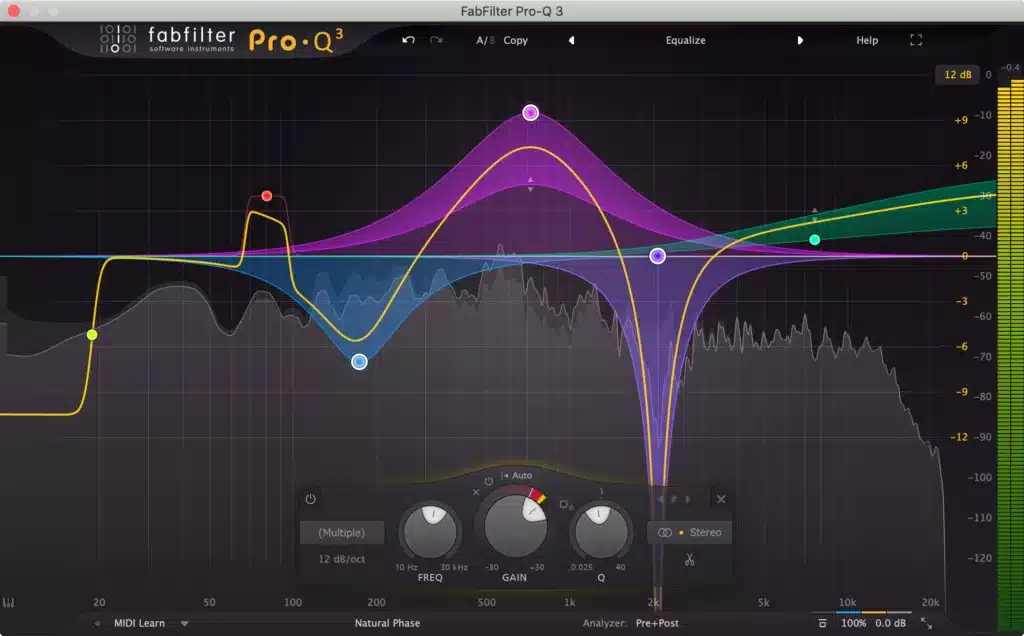How to Create a Phone Effect in Any DAW
Introduction
As a professional mixing and mastering engineer, I’ve used the classic “phone effect” on countless records—whether it’s to add a lo-fi vibe to a vocal, create a transition moment in a track, or give a hook that gritty, vintage edge. It’s a simple trick, but when done right, it can instantly elevate the vibe of your production.
In this guide, I’ll break down exactly how to create a phone effect in any DAW, using techniques I rely on in real-world sessions. Whether you’re working in Pro Tools, Studio One, FL Studio, or Logic, these steps will help you dial in that narrow, AM-radio-style sound that cuts through a mix in all the right ways.
Let’s get into it—and I’ll show you the approach I’ve developed after years of working with major-label artists and indie creatives alike.
Section 1: Understanding the Phone Effect
Before we dive into the technical aspects, it’s essential to understand what a phone effect is and why it’s worth incorporating into your audio projects. A phone effect is essentially a way to replicate the sound of a phone call, complete with its characteristic limitations and quirks.
What is a Phone Effect? A phone effect aims to recreate the sonic qualities of a phone call. This includes a limited bandwidth, lo-fi audio quality, background noise, and specific EQ characteristics. Think about those vintage phone conversations in movies or songs – that’s the effect we’re going for.
Why Use a Phone Effect? Phone effects can add a unique, nostalgic, or even eerie atmosphere to your audio. They’ve been used in countless songs, movies, and podcasts to create a sense of intimacy, authenticity, or simply to capture a bygone era.
Examples in Popular Culture To give you an idea, consider classics like “Another Brick in the Wall” by Pink Floyd, where a phone effect is used to convey a schoolteacher’s authoritarian voice. Or recall the eerie phone call in Alfred Hitchcock’s “Psycho,” which would have a very different impact without the phone effect.
Now that we have a clear understanding of what a phone effect is and its significance, let’s move on to the practical steps of creating one in your DAW.
Section 2: Choosing the Right DAW and Plugins
To embark on your phone effect journey, you’ll need the right tools. Your choice of DAW and plugins plays a crucial role in achieving the desired sound.
Selecting the Ideal DAW: When it comes to DAW selection, consider software like Ableton Live, Logic Pro, or FL Studio, which are known for their versatility and comprehensive audio manipulation capabilities. Each of these DAWs offers a range of built-in effects and supports third-party plugins, making them suitable choices for creating phone effects.

FabFilter Pro-Q 3
Essential Plugins for Phone Effects:
- EQ Plugins: Look for EQ plugins that allow precise adjustments to mimic the limited bandwidth of a phone call. High-pass and low-pass filters are your best friends here. I tend to use the FabFilter ProQ-3 for this.
- Noise Generators: To recreate the ambient noise of a phone call, consider using noise generator plugins that offer various types of background noise, from gentle hiss to crackling static.
- Saturation and Distortion: Achieving that lo-fi quality often involves adding subtle saturation or distortion. Look for plugins that can emulate the warmth and imperfections of vintage phone audio.
- Pitch-Shifting Tools: Altering pitch is a key element of the phone effect. Choose pitch-shifting plugins that offer granular control over pitch modulation.
With your DAW and essential plugins in place, you’re ready to set up your project.
Section 3: Setting Up Your Project
Creating a phone effect starts with a well-structured project in your chosen DAW. Let’s go through the initial steps.
Creating a New Project:
- Launch your DAW and start a new project.
- Set the project’s tempo, ensuring it matches the desired pace of your audio.
- Establish the project’s key, which can be crucial if you plan to incorporate musical elements.
Configuring Tracks:
- Create the necessary tracks for your project, including the source audio track that requires the phone effect.
- Ensure your source audio is high-quality and free from unwanted noise or artifacts.
Now that your project is set up, it’s time to apply the phone effect step by step.
Section 4: Applying EQ and Filtering
One of the foundational elements of a phone effect is the limited bandwidth and specific EQ characteristics. Here’s how to achieve that in your DAW.
Using EQ for Limited Bandwidth:
- Insert an EQ plugin on your source audio track.
- Apply a high-pass filter with a cutoff frequency around 300Hz to simulate the lower frequency response of phone calls.
- Follow up with a low-pass filter, cutting frequencies above 3kHz to mimic the limited high-end clarity of phone audio.
By implementing these EQ adjustments, you’re already on your way to capturing the essence of a phone call. However, there’s more to explore.
Section 5: Adding Background Noise and Distortion
Background noise and subtle distortion are key elements in achieving an authentic phone effect. Let’s delve into the details.
Introducing Background Noise:
- Add a noise generator plugin to your effects chain.
- Adjust the noise parameters to achieve the desired level and character of background noise.
- Experiment with different noise types, such as gentle hiss or subtle crackling, to find the right balance.
Embracing Distortion and Saturation:
- Insert a distortion or saturation plugin after the EQ and noise generator.
- Apply subtle distortion to your audio to emulate the lo-fi quality of phone calls.
- Fine-tune the distortion settings to maintain clarity while adding character.
These additions will bring your phone effect closer to reality. But we’re not done yet. Let’s move on to pitch and dynamics.
Section 6: Modifying Pitch and Dynamics
Altering pitch and dynamics is where you can truly mimic the sound of a phone call.
Pitch-Shift Your Audio:
- Add a pitch-shifting plugin to your effects chain.
- Experiment with small pitch variations, typically within the range of -5 to +5 semitones.
- Adjust the pitch modulation speed for a more authentic feel.
Managing Dynamics:
- Use a compressor or dynamics processor to control and smooth out the dynamics of your audio.
- Aim for a more consistent and compressed sound, akin to what you’d hear on a phone call.
With these adjustments, your audio is starting to sound remarkably like a phone conversation. But there’s room for some final tweaks and creative touches.
Section 7: Final Tweaks and Creative Touches
Before concluding your phone effect project, consider these additional refinements and creative options.
Fine-Tuning Reverb and Delay:
- Experiment with subtle reverb and delay effects to simulate the acoustics of a phone call.
- Adjust the wet/dry mix to find the right balance of ambiance.
Exploring Creative Variations:
- Don’t hesitate to get creative! Phone effects can be customized to suit various moods and contexts.
- Try different combinations of plugins, noise types, and EQ settings to achieve unique phone effects for different projects.
Conclusion
By now, you’ve got a solid understanding of how to create a phone effect in any DAW—from the why behind it to the how. Whether you’re going for a vintage vibe, adding emotional contrast, or just experimenting with texture, this technique is a powerful tool to have in your mixing toolkit. I’ve used it on everything from pop vocals to dialogue transitions, and it never fails to grab attention when done right. Try it out in your next session—you might be surprised at how much character a little lo-fi filtering can add.







